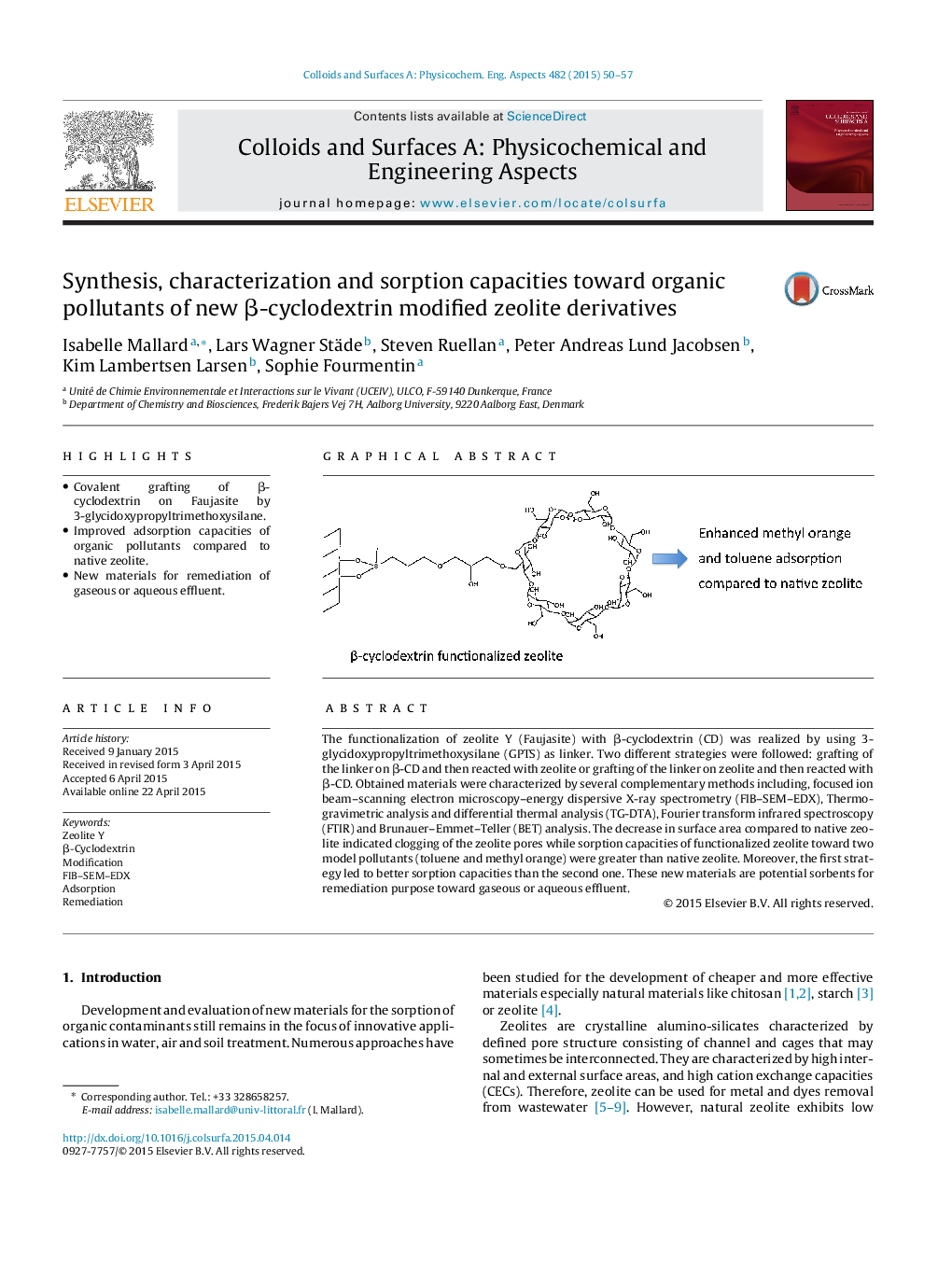| Article ID | Journal | Published Year | Pages | File Type |
|---|---|---|---|---|
| 592043 | Colloids and Surfaces A: Physicochemical and Engineering Aspects | 2015 | 8 Pages |
•Covalent grafting of β-cyclodextrin on Faujasite by 3-glycidoxypropyltrimethoxysilane.•Improved adsorption capacities of organic pollutants compared to native zeolite.•New materials for remediation of gaseous or aqueous effluent.
The functionalization of zeolite Y (Faujasite) with β-cyclodextrin (CD) was realized by using 3-glycidoxypropyltrimethoxysilane (GPTS) as linker. Two different strategies were followed: grafting of the linker on β-CD and then reacted with zeolite or grafting of the linker on zeolite and then reacted with β-CD. Obtained materials were characterized by several complementary methods including, focused ion beam–scanning electron microscopy–energy dispersive X-ray spectrometry (FIB–SEM–EDX), Thermogravimetric analysis and differential thermal analysis (TG-DTA), Fourier transform infrared spectroscopy (FTIR) and Brunauer–Emmet–Teller (BET) analysis. The decrease in surface area compared to native zeolite indicated clogging of the zeolite pores while sorption capacities of functionalized zeolite toward two model pollutants (toluene and methyl orange) were greater than native zeolite. Moreover, the first strategy led to better sorption capacities than the second one. These new materials are potential sorbents for remediation purpose toward gaseous or aqueous effluent.
Graphical abstractFigure optionsDownload full-size imageDownload as PowerPoint slide
